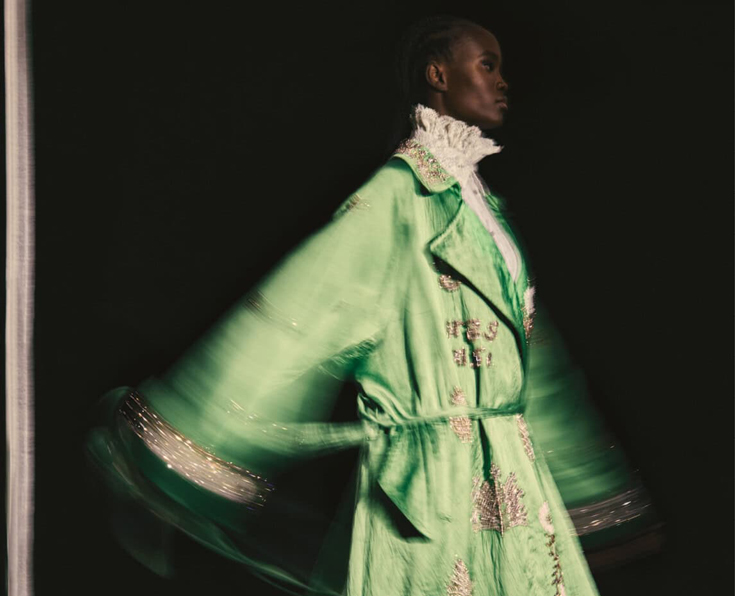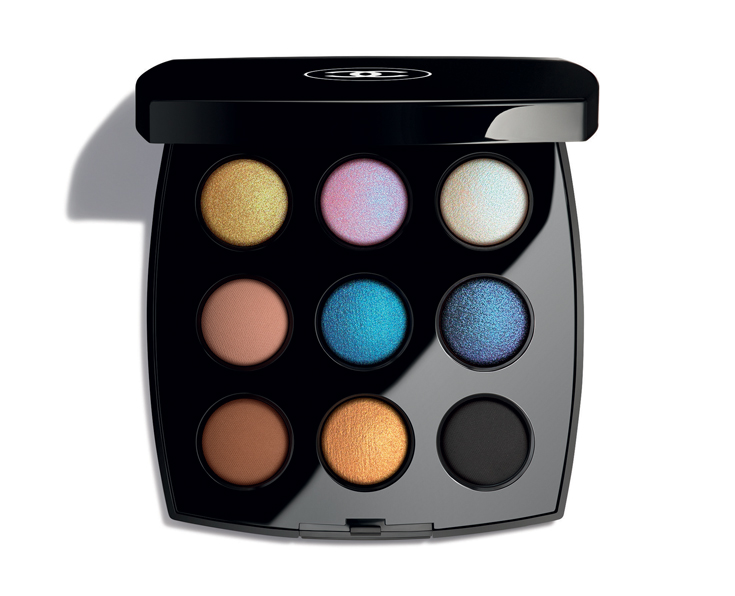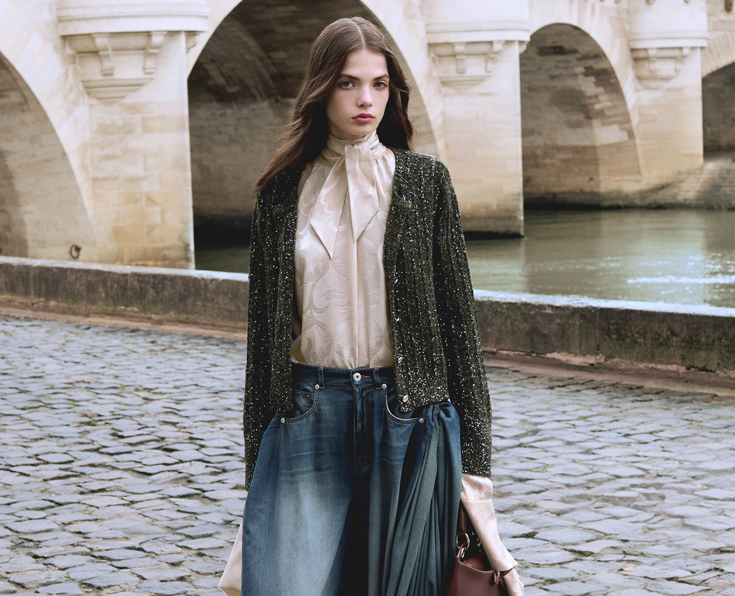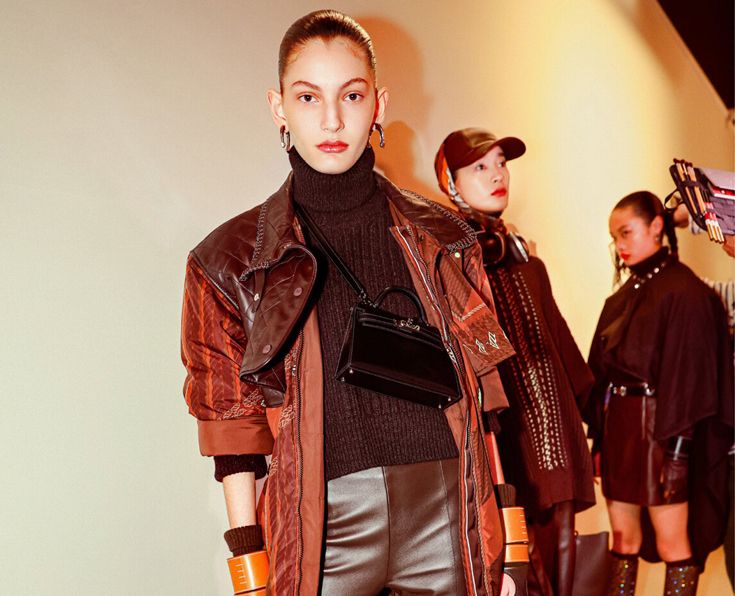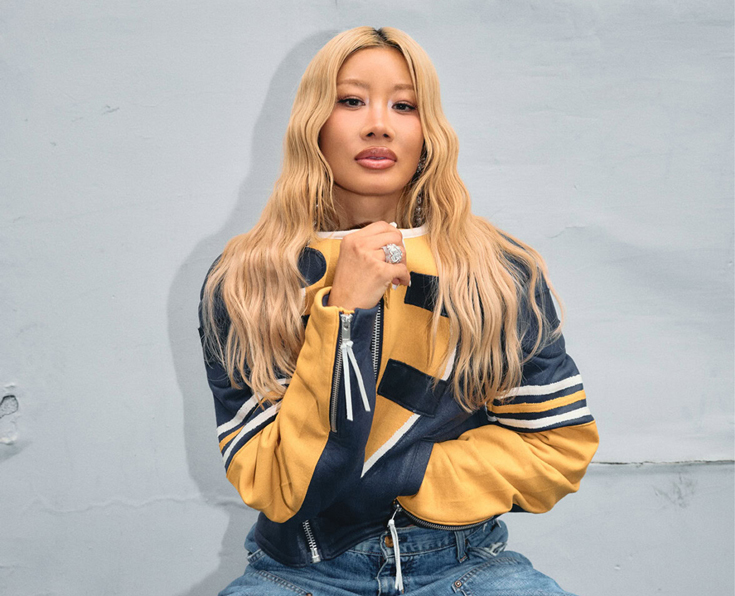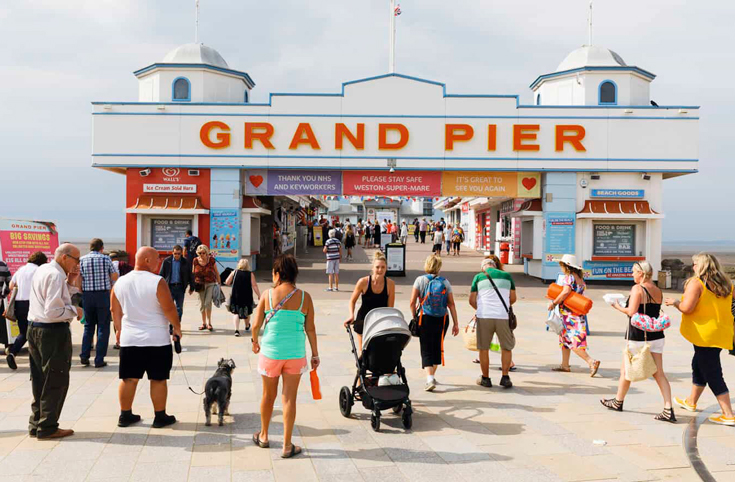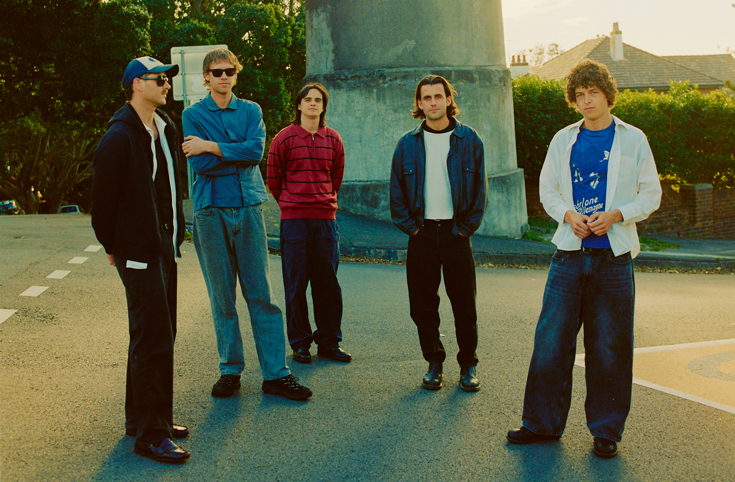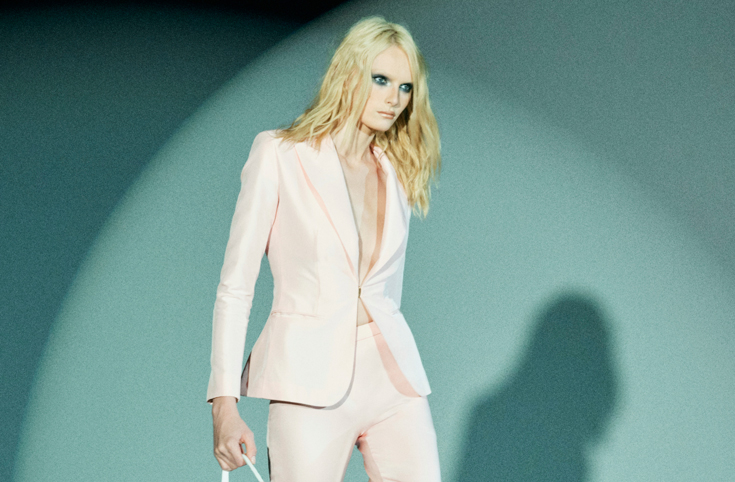FROM THE ISSUE: TAPZ GALLANTINO

It’s a Sunday afternoon in Palm Springs, California, in the middle of summer. The heat has reached a scorching height of 50 ̊C. Tapz Gallantino doesn’t mind. “I’m living my dream,”he says, grinning, as he stands in the middle of the desert.
He’s supercharged by the sun and dressed in a pure white woollen suit from the late Virgil Abloh’s last collection for Louis Vuitton menswear. The artist, musician, producer and model, known as Tapz Gallantino (real name Tapiwa Mutingwende), grew up in Wedza, Zimbabwe, “in a very rural place – the fact that I’m even here right now makes very little sense” before moving with his family to Wellington, New Zealand, at the age of 10. “I’m a walking culture clash, that’s why my art is the way it is,” he says. “We’d listen to a lot of traditional Zimbabwean music, a lot of Bob Marley, too. Some Michael Jackson and Prince, but I never really understood English, I just felt the music. In New Zealand, it was punk rock.” With his debut album All For What set to come out towards the end of the year, Tapz now resides in Los Angeles, where he currently feels most empowered, because “ultimately, I’d rather be Black in America than be Black in NewZealand. At least here I’m not alone.”

Going back to New Zealand during the pandemic, Gallantino found himself at the centre of “petty music industry beef that soon became senseless attacks of gang violence and false accusations,” he says. “I was getting hundreds of death threats. People, including neo-Nazis, were telling me to leave the country. Black people were being beaten up on the streets of Wellington, my parents were being targeted.” Gallantino has written a book, started a brand to empower creatives and conceptualised and finished his debut album. “Everything I’ve been building is around this story but everything I had built up until that point was being assassinated. It was polarising. It didn’t take long for me to understand that everything I’m seeing I’d heard before.This narrative they made up only worked because it fitted in with the ignorance around race in New Zealand, specifically. There, the Black population is less than 1 per cent. I’ve always been vocal about this throughout my career. I put myself in the firing line for it. It makes sense that people would believe false narratives about me because that ‘They’re just immigrants, this is what they do’ mentality is already ingrained in the culture there.”
What has resulted from his traumatic experiences are layers of art, including a debut album which blends sonic influences and those difficult circumstances to create a powerful, cinematic, synth-fuelled, punk-R&B record. After the breakthrough track Killa made its splash in 2015 (it was later added to his first EP, 2017’s Beautiful Nightmare), Gallantino found his voice and has solidified his sound on this new album project. It’s his strongest work to date. Where it feels deeply sad lows, it reaches monstrously empowering highs in other moments. In each bar, Gallantino is in full control of the narrative. It’s his creative justice. “The album is a documentation of whatI experienced, an observation of how I reacted. The principles at the core of the album and my story are not new: character assassination, the Black experience, cancel culture, trust issues and wanting to be seen and heard... They’ll shame you for wearing your heart on your sleeve. ButI don’t feel like hate is innate. I think love is. People do the ugliest things in love of something.Those people don’t hate me, they would have to know me to have a feeling about me. But they know what they love, and people will do hateful things for what they love.”

The album has been a long time coming - Gallantino has been grinding in the music industry for seven years. In 2016, he was signed to a management deal at Kanye West’s G.O.O.D Music label (he now moves independently, finding he has the most control doing it his way). He’s also spent time in the studio with Brent Faiyaz and 6LACK, and toured with Banks in Australia and A$AP Ferg and Lorde in New Zealand. It’s only now that it feels he has fully come into his own with a compassionate understanding of what has been experienced so far on his journey.“I had a really traumatic experience [in New Zealand] but I learnt that boundaries and choices are the dopest thing. I know I’m someone who is graceful, I know I’m someone who is loving. I’ve experienced plenty of ego deaths.” His parents, who reside in Wellington, are teachers, and his heroes. “My mum taught fashion and hospitality then moved to the Ministry of Education in New Zealand, where she builds learning infrastructures for children with special needs and the gifted. My dad teaches construction and building. I think the biggest thing they taught me is to how to learn.” He is observant, a sponge ready to soak up the presence and knowledge of all those around him. “I think the most experience happens in the period of reflection.”
Gallantino’s style lies in the intersection of his mum’s and dad’s looks when they go on date nights. “The balance between masculine and feminine,” he says. While he always looks epic, it’s evident today that he’s in his element, gliding gracefully through the desert in Abloh’s last designs for Louis Vuitton. The mark on culture that the designer made has had a deep impact on him. “It wasn’t his work, it was his humanity, his existence, that impacted me. I never got to meet him, but I felt what he did. The thing I loved most about what he did was that he wasn’t afraid to do. He was one of the best listeners of culture and that’s why he informed culture as much as he did. It was less about clothes with Virgil. And Virgil always replied. He invited everyone in. In my culture you have more food, you have more things to offer, your table gets bigger. It’s very different to the Western world in which it gets smaller and your fence gets higher.But Virgil embodied that mentality, that we all eat at the table.” The single Louis V, released last November, exemplifies Gallantino’s love for the house and his appreciation of Abloh’s cultural impact – it is a “perfectly aligned example of manifestation”, he notes, with a laugh.

His other labour of love is a newly established incubator for independent creatives, SocialCrucifixion (also the name of his EP, released last December). Co-founded with his second cousin Kudzai Taziva – first meeting on SoundCloud, the two discovered they were cousins at a family party in New York a few years ago, where Taziva was, by chance, playing Gallantino’s music (he’d been a long-time fan) – the brand’s mission is to empower creatives through offering tools to build an ecosystem that allows them to own, curate and control their narrative, data and identity. “The current infrastructure to distribute and connect with an authentic audience lacks transparency and disproportionately favours legacy media platforms,” he says. Their solution is a set of creator-centric digital services that allow people to understand and monetise their footprint. The duo has begun to consider social media in the same way artists consider owning their music and production masters. “What happens when your masters become your likes, followers and vanity metrics that have nothing to do with your craft?” says Taziva. “Those have become as important as the masters. But they can be taken away from you at any point – and they [your social media followers] can turn against you. Coming from tech, the whole value proposition behind companies like Meta, Microsoft and Google is to attract and extract: attract a following from people who are going to get you a platform and then extract as much value from them as possible and then forget them. It’s a broken model. I think we can help to come up with a better system.” Through Social Crucifixion, the duo hopes to disrupt this system and bring awareness and education to how artists can navigate the current digital landscape. They also hope to soon include an mCommerce avenue of sustainable “designer wear for your digital footprint”.
Music is just one piece of the puzzle, but it’s an endeavour that will undoubtedly reach great heights. Gallantino wants to work with Beyoncé, Rihanna, M.I.A. and A$AP Rocky because no feat is too big. He is at peace with where he’s at in his journey and home is wherever he finds himself. The rapper attributes his self-awareness to “ghetto therapy – like this interview– or staying up with my friends until dawn, just talking,” and his painting practice, influenced by Jean-Michel Basquiat and the Zimbabwean style of Weya art. Gallantino’s garden in EastHollywood is lined with a rainbow of his brilliant, abstract paintings. “I feel euphoric whenI’m painting. Like oxygen has just been introduced into my lungs for the first time. I don’t listen to music when I’m painting. I just listen. It’s such a haven. You can hear the wind kissing the leaves, the birds harmonising, laughter in the distance.” His superpower is listening. Today, Gallantino is running through the desert in one of his hero’s creations, smiling, feeling deep gratitude and standing for creative justice. “The things that give you the greatest reward initially require discomfort. But it’s always worth it.”
Tapz wears Louis Vuitton AW22 throughout. Photographed by Elliott Morgan and styled by Roxy Lola.
From the new issue of 10 Men Australia, Issue 20 - PEACE, COURAGE FREEDOM - out now.






